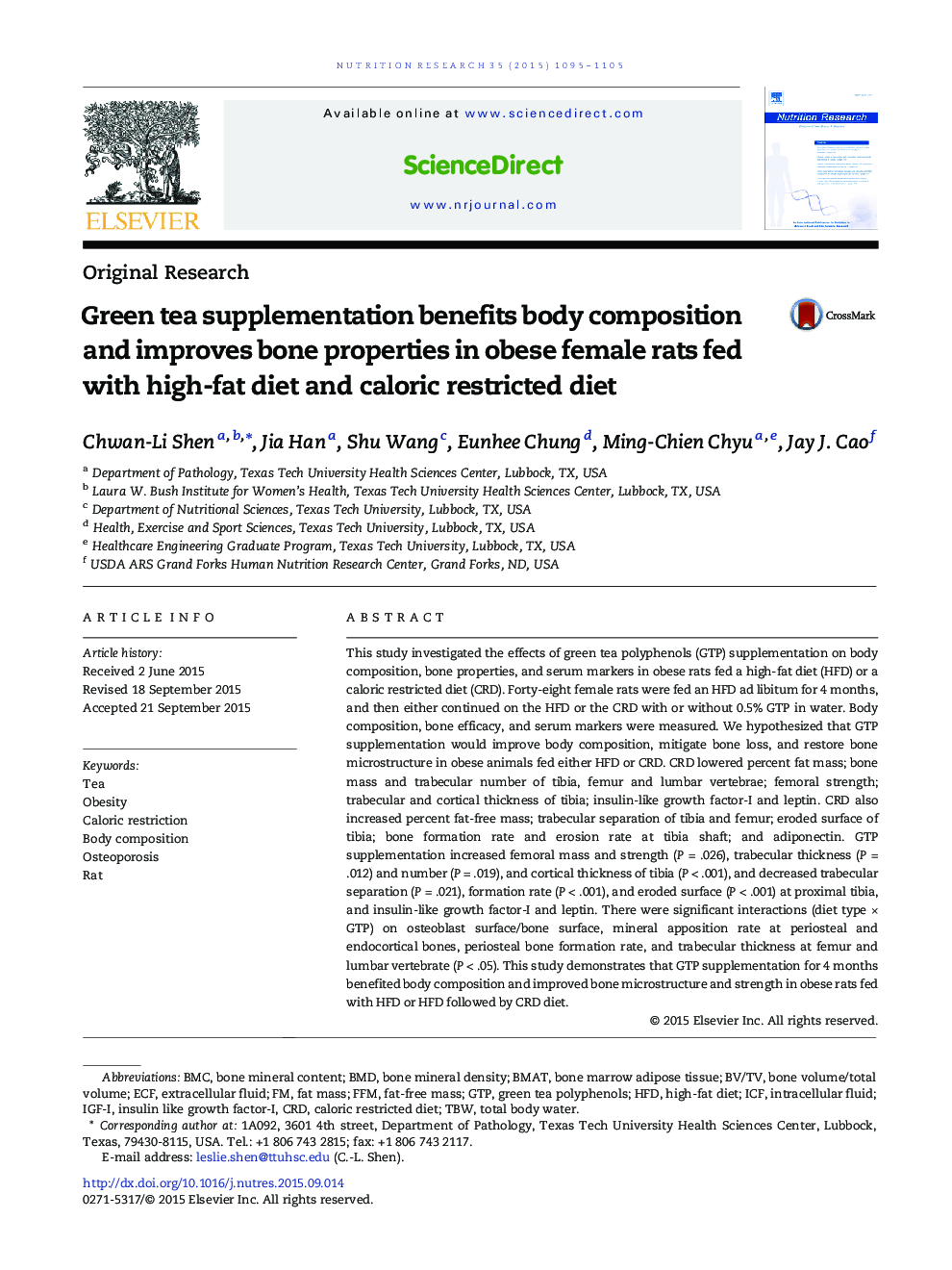| Article ID | Journal | Published Year | Pages | File Type |
|---|---|---|---|---|
| 5904335 | Nutrition Research | 2015 | 11 Pages |
This study investigated the effects of green tea polyphenols (GTP) supplementation on body composition, bone properties, and serum markers in obese rats fed a high-fat diet (HFD) or a caloric restricted diet (CRD). Forty-eight female rats were fed an HFD ad libitum for 4 months, and then either continued on the HFD or the CRD with or without 0.5% GTP in water. Body composition, bone efficacy, and serum markers were measured. We hypothesized that GTP supplementation would improve body composition, mitigate bone loss, and restore bone microstructure in obese animals fed either HFD or CRD. CRD lowered percent fat mass; bone mass and trabecular number of tibia, femur and lumbar vertebrae; femoral strength; trabecular and cortical thickness of tibia; insulin-like growth factor-I and leptin. CRD also increased percent fat-free mass; trabecular separation of tibia and femur; eroded surface of tibia; bone formation rate and erosion rate at tibia shaft; and adiponectin. GTP supplementation increased femoral mass and strength (P = .026), trabecular thickness (P = .012) and number (P = .019), and cortical thickness of tibia (P < .001), and decreased trabecular separation (P = .021), formation rate (P < .001), and eroded surface (P < .001) at proximal tibia, and insulin-like growth factor-I and leptin. There were significant interactions (diet type × GTP) on osteoblast surface/bone surface, mineral apposition rate at periosteal and endocortical bones, periosteal bone formation rate, and trabecular thickness at femur and lumbar vertebrate (P < .05). This study demonstrates that GTP supplementation for 4 months benefited body composition and improved bone microstructure and strength in obese rats fed with HFD or HFD followed by CRD diet.
